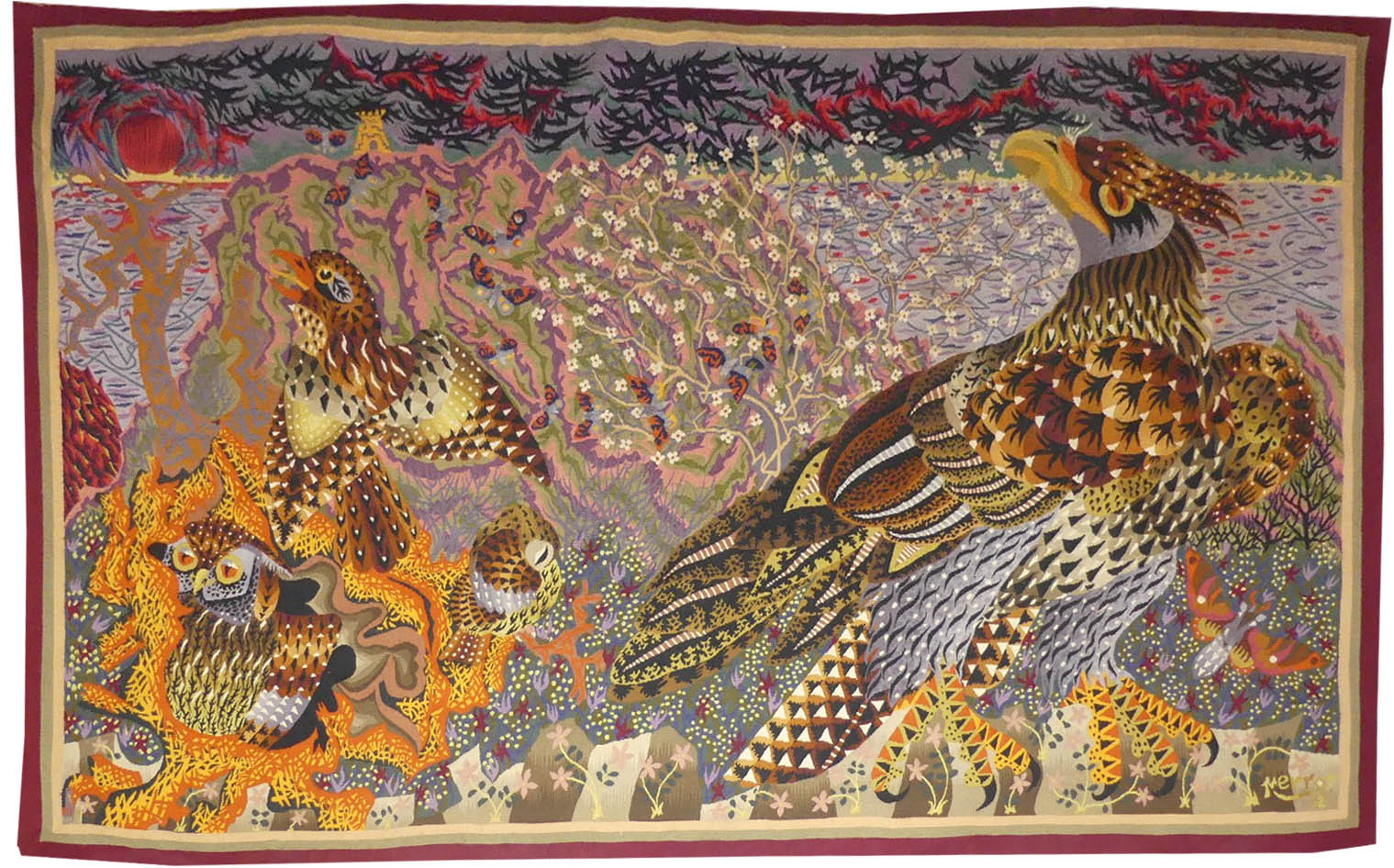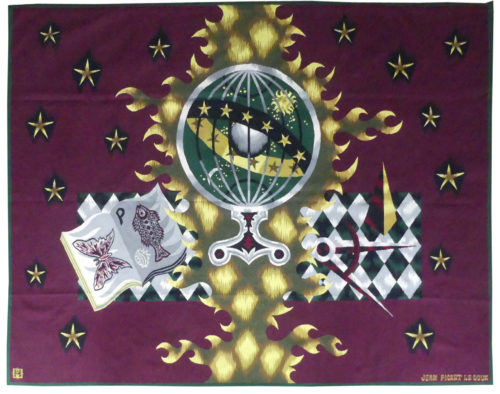Oiseaux (birds)
Aubusson tapestry woven by the Tapisseries de France cooperative.
1952.
Perrot began his career as a cartoon designer at the end of the war, making almost 500 cartoons including numerous commissions from the state, most of which were woven at Aubusson. His style which is particularly rich and decorative is eminently recognisable : a crowd of butterflies or birds, most often, stands out against a background of vegetation, reminiscent of the millefleurs tapestries (which would also inspire Dom Robert).
If in Perrot's tapestries birds are often present (almost a trademark !) the use of landscape as a background is much rarer despite the artist having produced numerous works in gouache of his travels (Doubs, Auvergne, Collioure, the Canaries...), works which, despite their sensitivity, remain essentially little known.
Bibliography :
Tapisseries, dessins, peintures, gravures de René Perrot, Dessein et Tolra, 1982



